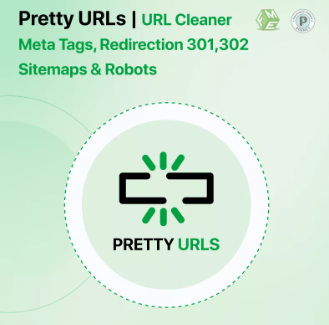Creating a clean URL structure is essential for enhancing user experience and improving SEO performance on your PrestaShop store. Clean URLs make it easier for search engines to index your pages and for customers to navigate your site. If you’re looking to implement a PrestaShop friendly URL setup, follow these ten steps to ensure your URLs are optimized effectively.
1. Enable Friendly URL Settings
The first step is to enable the friendly URL feature in PrestaShop. Go to “Shop Parameters” > “Traffic & SEO” in your admin panel and toggle the “Friendly URL” option to activate it. This transformation will change your URLs from complex strings to clean, readable formats, laying the groundwork for a better user experience.
2. Clear Your Cache
After enabling friendly URLs, it’s crucial to clear your PrestaShop cache. This ensures that all changes are reflected immediately. Navigate to “Advanced Parameters” > “Performance” and click on “Clear Cache.” Doing this helps eliminate any old URL versions that may still be stored in your system.
3. Utilize URL Rewriting
Take advantage of URL rewriting to create more descriptive URLs. Instead of showing IDs and parameters, rewrite your URLs to reflect the content of the page. For instance, convert a URL like www.example.com/index.php?id_product=123 into www.example.com/red-shoes. This improves readability and SEO.
4. Remove Unnecessary Parameters
Stripping unnecessary parameters from your URLs is essential for cleanliness. Use PrestaShop’s tools or third-party modules to prestashop friendly url not working issues, ensuring that your URLs don’t contain irrelevant information. Focus on keeping only essential components that describe the page accurately.
5. Create Descriptive Keywords
Incorporate relevant keywords into your URLs to help with SEO. Descriptive URLs provide better context for search engines and users alike. For example, instead of a generic URL, use specific phrases that reflect the product or category, such as www.example.com/summer-dresses. This approach boosts your search visibility.
6. Ensure Consistency Across URLs
Maintaining a consistent URL structure is vital for both SEO and user navigation. Develop a clear pattern for your URLs and stick to it, whether it’s for product pages, categories, or blog posts. A consistent format makes it easier for users to understand your site’s layout and enhances SEO.
7. Avoid Special Characters
Special characters can complicate URLs and negatively affect SEO. Clean URLs should consist of letters, numbers, and hyphens only. Remove symbols like “&” and “%” to ensure your URLs remain user-friendly and easily shareable. For instance, instead of www.example.com/product?id=123, use www.example.com/product-name.
8. Regularly Monitor Your URLs
Once your URLs are set up, it’s important to regularly monitor them for any issues. Use tools like Google Search Console to identify problems such as broken links or indexing errors. Regular checks will help you maintain a clean URL structure and ensure a seamless user experience.
9. Implement Redirects Wisely
If you change any existing URLs, make sure to set up proper 301 redirects. This way, you can guide users and search engines to the new URLs without losing traffic or SEO value. Proper redirects help preserve the integrity of your site while allowing for necessary changes.
10. Test Everything
Finally, after making all the changes, thoroughly test your URLs. Navigate through your site to ensure that all URLs are functioning correctly and that there are no errors. Testing is crucial to verify that your PrestaShop friendly URL setup is effective and that users can easily access your pages.
Leverage SEO Tools and Plugins
To further streamline your URL management, consider utilizing SEO tools and plugins specifically designed for PrestaShop. These tools can automate various aspects of URL optimization, from generating SEO-friendly URLs to analyzing performance metrics. By leveraging such tools, you can save time and ensure that your URLs are consistently optimized according to best practices. Additionally, these plugins often provide features like XML sitemap generation and meta tag management, contributing to an overall boost in your SEO efforts.
Engage Your Audience for Feedback
Lastly, engaging with your audience for feedback on your URLs can provide valuable insights. Encourage customers to share their experiences navigating your site and their thoughts on the clarity of your URLs. If users find certain URLs confusing or difficult to remember, consider revising them based on this feedback. By creating an open line of communication with your audience, you not only improve your website’s usability but also foster a sense of community and trust among your customers. This user-focused approach can ultimately lead to higher engagement and conversion rates.
Conclusion
Implementing a clean URL setup in PrestaShop is vital for enhancing both user experience and search engine performance. By following these ten steps, you can ensure your URLs are optimized for success. From enabling friendly URLs to monitoring and testing your changes, each step contributes to a streamlined and effective online store.
Stay tuned for more news and updates on Infinite Insight Hub!



